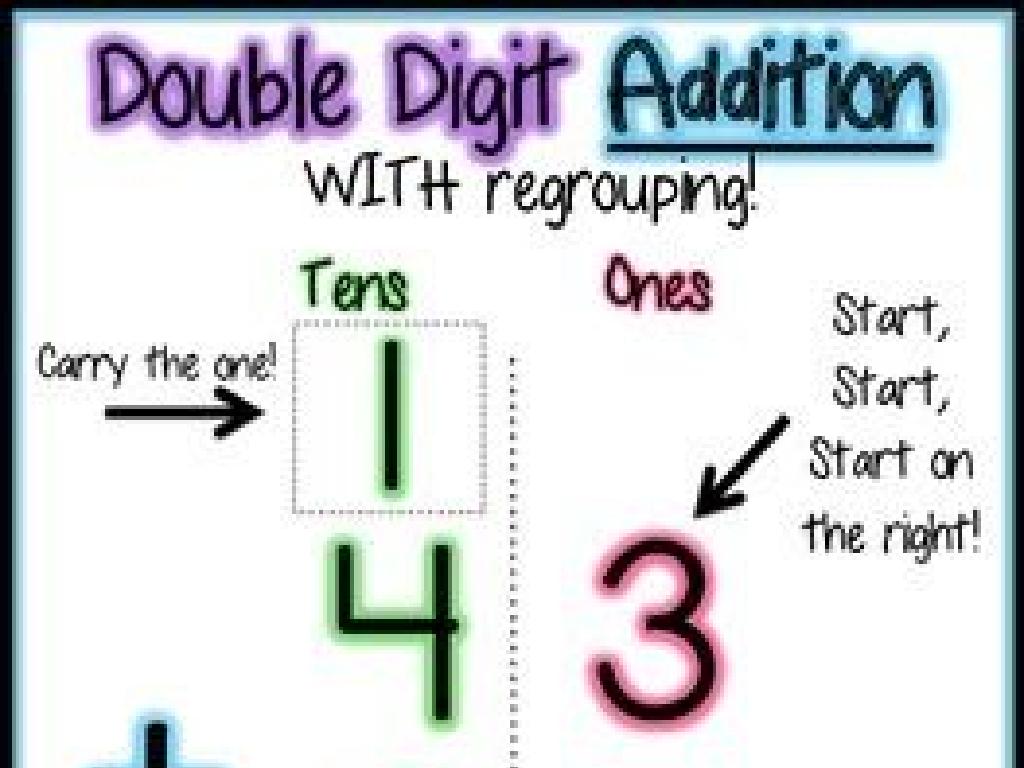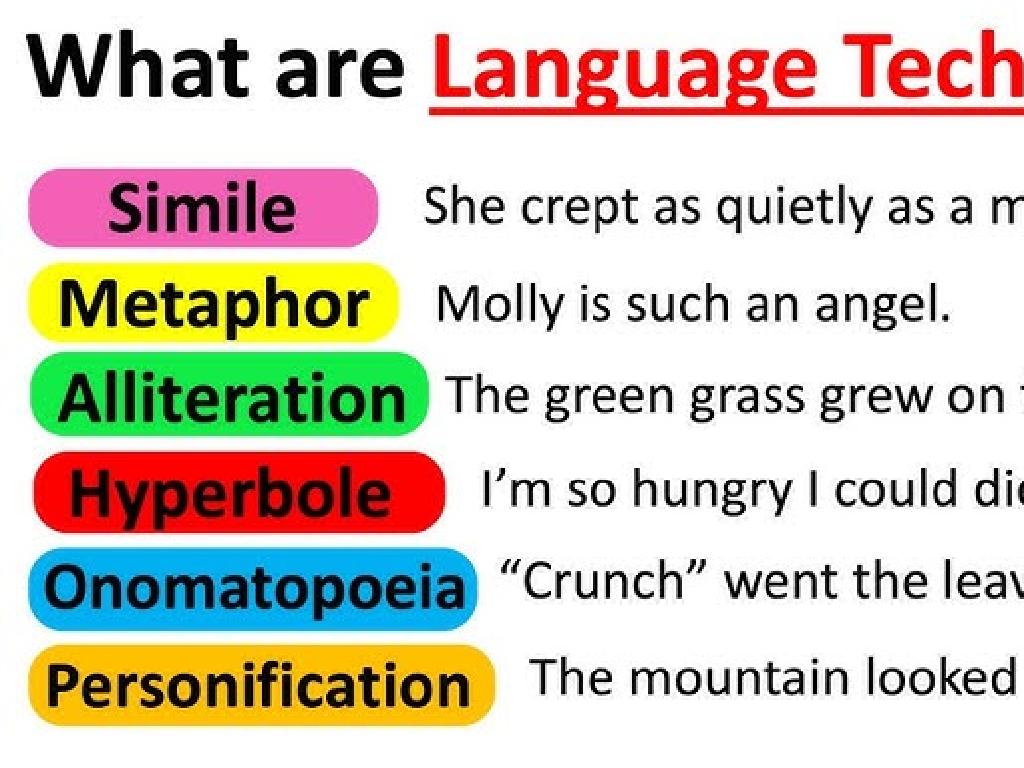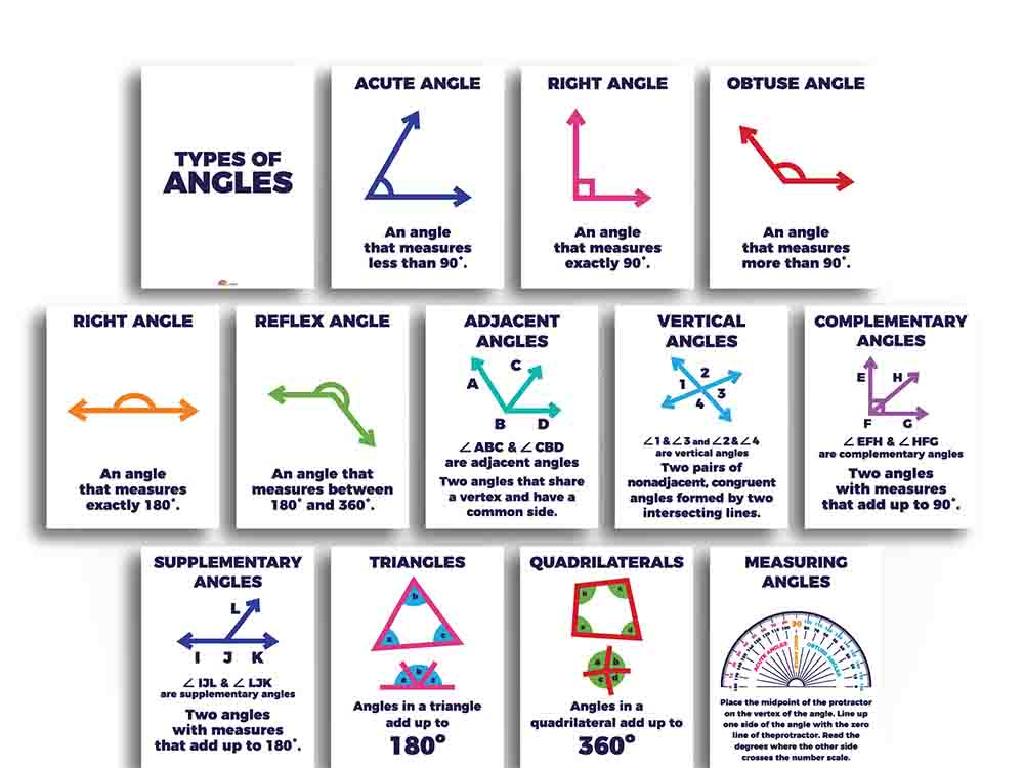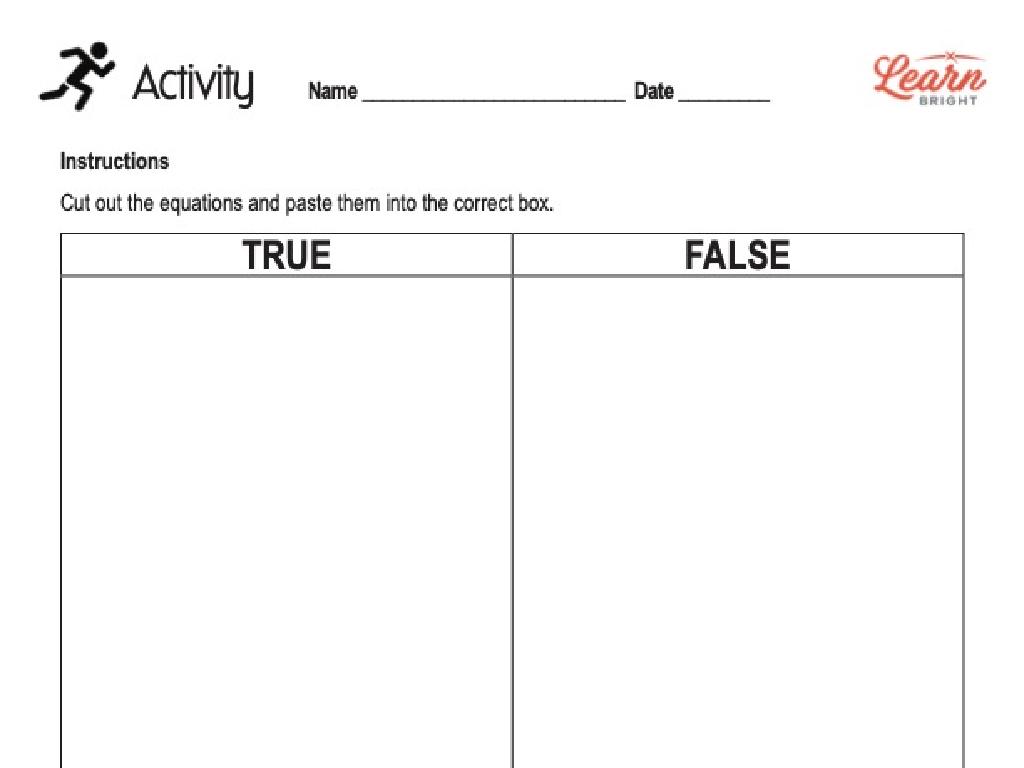Addition Sentences Up To 5 - What Does The Model Show?
Subject: Math
Grade: Pre-k
Topic: Addition Up To 5
Please LOG IN to download the presentation. Access is available to registered users only.
View More Content
Welcome to Addition!
– Greeting our little mathematicians
– Learning to put numbers together
– Addition means more toys
– If you have 2 toys and get 3 more, now you have 5!
– Visualizing addition with toys
– We’ll use toy boxes to see how addition works.
|
This slide is designed to introduce Pre-K students to the concept of addition in a fun and relatable way. Start by greeting the students warmly to create an inviting learning environment. Explain that addition is simply the process of putting numbers together, just like combining toys from different toy boxes. Use tangible examples like toys, which are familiar to the children, to illustrate the concept of addition. Show how adding more toys to a toy box increases the total count, reinforcing the idea that addition is about combining quantities. Encourage the children to visualize the process with actual toys or illustrations of toy boxes, making the abstract concept of addition more concrete. The goal is to make the students comfortable with the idea of addition before moving on to more formal mathematical expressions.
Understanding Addition: Combining Sets
– Addition combines groups
– Think of adding as putting two snacks together to have more.
– Adding makes numbers bigger
– If we have 2 apples and add 3 more, we have 5 apples!
– Like joining block sets
– Visualize with block models
– Using blocks, we can see 2 blue blocks plus 3 red blocks make 5 blocks.
|
This slide introduces the concept of addition to Pre-K students by relating it to combining sets of familiar objects, like blocks or snacks. Start by explaining that addition is a way to find out how many items we have in total when we put groups together. Use tangible examples like combining different colored blocks to show that when we add, the total number of blocks increases. Encourage the students to visualize the process with real objects to grasp the concept of addition effectively. The goal is to make them understand that addition results in a larger number and that it’s a simple process of combining sets.
Learning Addition Sentences Up to 5
– What is an addition sentence?
– It has numbers and a plus sign, like 1 + 2.
– Example: 2 + 3
– 2 + 3 is a simple addition sentence.
– Adding numbers together
– We combine 2 and 3 to make 5.
– Addition sentences show sums
– They tell us the total of two numbers.
|
This slide introduces the concept of addition sentences to Pre-K students. Start by explaining that an addition sentence is a way to write down the action of adding two numbers together. Use simple examples like 2 + 3 to illustrate this concept. Show them visually, if possible, how we combine two groups of objects to find the total amount. Reinforce the idea that the plus sign indicates addition and the equal sign shows the result. During the class, use physical objects like blocks or counters to demonstrate addition sentences and allow the children to create their own addition sentences using these objects.
Let’s Add Up to 5!
– Adding numbers within 5
– Examples: 1+1, 2+2, 1+4
– Simple sums that equal 2, 4, and 5
– Understanding addition models
– Visual aids like fingers or blocks show addition
– Think of numbers that make 5
– Can you find pairs of numbers that add to 5?
|
This slide is aimed at helping Pre-K students understand the concept of addition within the number 5. Start by explaining that addition is putting together numbers to find out how many there are in total. Use tangible examples like adding 1 apple plus 1 apple to make 2 apples. Show them how to use their fingers or objects like blocks to represent numbers and visualize the addition process. Encourage the students to come up with their own examples of number pairs that add up to 5, fostering an interactive and engaging learning environment. Reinforce the concept by having them use physical objects to model the addition sentences they create.
Understanding Addition with Models
– Models show addition visually
– Visual aids for understanding how two numbers combine to make a new number
– Use pictures, fingers, or blocks
– Pictures can represent objects, fingers for counting, blocks for building
– Counting with models
– Let’s add together: 1 block + 2 blocks = 3 blocks
– Models make learning fun
|
This slide introduces the concept of using models to understand addition. Models are tangible or visual representations that help children grasp the concept of combining two sets to make a new total. Encourage the use of different models such as pictures for a more abstract representation, fingers for a personal and accessible tool, and blocks for a more tactile learning experience. Engage the class in a counting activity using one of the models to demonstrate addition in a way that is interactive and enjoyable. Emphasize that models are a fun way to learn and understand addition, making the abstract concept more concrete for young learners.
Addition Practice: Adding Up to 5
– Let’s practice adding together!
– Using pictures to understand addition
– Pictures make it easier to see the addition
– Keeping our numbers 1 through 5
– Fun with addition: examples we’ll try
– Example: 2 apples + 3 apples = 5 apples
|
This slide is designed to introduce Pre-K students to the concept of addition using visual aids. By using pictures, students can physically see the addition process, which helps in understanding the concept of combining two groups of items. Keep the numbers small, from 1 to 5, to ensure the concept is graspable for their age. During the presentation, show examples using common items, like fruits or toys, to add together. Encourage the students to participate by counting aloud with you. The goal is to make addition a fun activity. For the next class, prepare different sets of items for the students to practice adding on their own or in small groups, reinforcing the concept through repetition and engagement.
Class Activity: Adding with Blocks
– Try adding with blocks
– Create your own addition sentences
– Use blocks to represent numbers and add them
– Pair up and add together
– Work with a classmate to practice adding
– Show your addition to the class
– Share your addition sentences with everyone
|
This interactive class activity is designed to help Pre-K students understand the concept of addition by using tangible blocks. Students will pair up and use a set number of blocks to create addition sentences up to 5. For example, they might combine 2 blocks with 3 blocks to make 5. Encourage them to verbalize their sentences, such as ‘2 plus 3 equals 5’. As they work, circulate the room to offer guidance and ensure understanding. Possible variations of the activity could include using different colored blocks to represent different numbers, having students find multiple ways to add up to the same number, or introducing simple subtraction by removing blocks. The goal is to make addition a hands-on, visual experience.
Review and Goodbye!
– Great job learning addition!
– Addition means together
– Combining two numbers to make a new one
– Practice makes perfect
– Use toys or fingers to keep adding
– Have fun with numbers!
– Numbers are everywhere, play counting games
|
This slide is meant to wrap up the lesson on addition sentences up to 5. It’s important to praise the students for their hard work and remind them of the basic concept of addition – bringing numbers together to find a sum. Encourage them to continue practicing with real-life objects, which can make learning more tangible and enjoyable. Suggest that parents involve children in playful activities that incorporate counting and simple addition, such as counting toys during cleanup or adding small snack items like fruit pieces. Reinforce the idea that math is a part of everyday life and can be a fun exploration.






